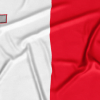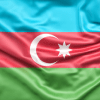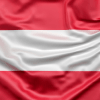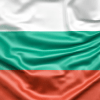About Latvia

Latvia is one of the trio of Baltic states, along with Estonia and Lithuania.
Square – 64,589 km².
Population – 1,842,226 people.
The capital – Riga.
The national language – Latvian. English is widely spoken among locals. It is actively used in the business and tourism fields.
Latvia is subdivided into a total of 43 local administrative units – 36 municipalities and seven state cities. The state cities, each with its own city council and administration, are Daugavpils, Jelgava, JÅ«rmala, LiepÄja, RÄ“zekne, Riga, and Ventspils.
Latvia is boarded with Estonia to the north, Lithuania to the south, Russia to the east, and Belarus to the south-east. The country has a maritime boundary to the west, which it shares with Sweden.
Map

Latvia’s administrative divisions consist of 36 municipalities and seven state cities. The state cities, each governed by its own city council and administration, include Daugavpils, Jelgava, JÅ«rmala, LiepÄja, RÄ“zekne, Riga, and Ventspils, making up a total of 43 local units. Latvia’s geography is defined by its Northern European location, featuring a picturesque 500-kilometer Baltic Sea coastline with sandy beaches and dunes. Predominantly flat, Latvia is graced by a network of rivers and lakes, with the Daugava River as its largest watercourse. Approximately half of the country is covered by rich in biodiversity and resource forests. Hilly and upland regions grace the eastern and southeastern areas, including the nation’s highest point, Gaiziņkalns. Coastal islands like Saaremaa and Hiiumaa provide unique landscapes. Latvia’s climate boasts four distinct seasons, supporting agriculture and outdoor activities. The country’s commitment to environmental conservation is evident through national parks, reserves, and sustainable forestry practices.
Language

Latvia has only one official language – Latvian. It belongs to the Baltic language sub-group of the Balto-Slavic branch of the Indo-European language family. The country places a strong emphasis on affirming the rights of ethnic minorities to preserve and develop their languages. Latgalian, a historical Latvian dialect, enjoys legal safeguards. Russian remains the dominant minority language, with 34% of people using it at home in 2020. Recognizing the importance of globalization, English is widely taught in schools and universities. A wide range of locals know English and use it on an everyday basis.Â
Climate

Latvia experiences a temperate climate characterized by warm summers and cold winters. January sees average temperatures of -5 degrees Celsius and July averages around 17 degrees Celsius. The country receives an annual average of 600 millimeters of precipitation. Situated in Northern Europe near the Baltic Sea, Latvia’s climate is influenced by the sea’s moderating effect. July and August are the warmest months, with an average temperature of approximately 17 degrees Celsius, January and February are the coldest, averaging around -5 degrees Celsius. Latvia’s climate generally supports human habitation with mild winters, cool summers, and moderate precipitation.Â
Cuisine
Latvian cuisine is a robust and flavorful culinary tradition deeply rooted in the nation’s history and culture. It embraces the use of fresh, seasonal ingredients and is renowned for its incorporation of grains, potatoes, and dairy products. Some of the most beloved Latvian dishes include:
- Grey Peas with Bacon (PelÄ“kie zirņi ar speÄ·i): A hearty stew made with grey peas, bacon, onions, and spices. It’s commonly served alongside rye bread and sour cream;
- Potato Pancakes (Kartupeļu pankūkas): These pancakes consist of grated potatoes, onions, eggs, and flour. They are often enjoyed with a dollop of sour cream and a side of applesauce;
- Rye Bread (Rupjmaize): Rye bread holds a special place in Latvian cuisine, typically crafted from rye flour, water, and salt. It’s a versatile staple used as a side dish or for creating sandwiches;
- Sauerkraut (SkÄbnÄ“ti kÄposti): This fermented cabbage dish is a Latvian favorite, serving as both a side dish and an essential ingredient in soups and stews;
- Gingerbread Cookies (Piparkūkas): These sweet delights are cherished in Latvia, often adorned with vibrant icing and sprinkles for a delightful treat.
Latvian culinary traditions celebrate the nation’s heritage through these comforting and savory dishes, offering a taste of Latvia’s rich culture and history.
Education

Higher education in Latvia is renowned for its academic excellence, international outlook, and accessibility. The nation’s universities uphold rigorous standards and prioritize research and innovation. Latvia’s participation in the Bologna Process ensures global recognition of Latvian degrees, providing students with a valuable and transferable education. Latvian universities-partners of Alfred Education Group offer a diverse array of programs, encompassing Bachelor’s, Master’s, and Doctoral degrees across a wide spectrum of fields, from the humanities to natural sciences.
Educational programs are conducted in English, fostering a multicultural learning environment and attracting students from various corners of the world. Affordability is a key advantage of studying in Latvia, with reasonable tuition fees and a cost-effective living environment. Scholarships further ease the financial burden for both local and international students. The country’s universities focus on academic pursuits and offer a vibrant student life with numerous organizations and activities. Latvia’s commitment to research provides students with hands-on experience and the opportunity to engage in impactful projects. Safety, high quality of life, and stunning landscapes make Latvia an appealing destination for higher education.Â
Leisure Activities

Latvia extends an invitation to explore its wide range of leisure activities and cultural treasures. Latvian architecture exposes international students to centuries of history and introduces them to local culture. The Old Town of Riga is a UNESKO-recognised landmark with Riga Castle and the iconic St. Peter’s Church. The expansive Gauja National Park, a natural wonder featuring lush forests, tranquil lakes, and meandering rivers, awaits exploration. A visit to the refined RundÄle Palace, nestled in PilsrundÄle, reveals a true architectural gem. Along the Baltic coast, one discovers inviting beaches like JÅ«rmala Beach and PÄvilosta Beach. Nature enthusiasts have the opportunity to take advantage of a network of hiking trails, including the Gauja River Trail and Kemeri National Park Trail.
Whether paddling through Latvia’s rivers and lakes or trying a hand at fishing in the Baltic Sea, the country offers diverse aquatic experiences. During the colder months, Latvia transforms into a winter wonderland with ski resorts such as Sigulda Ski Resort. For relaxation, Latvia’s spas provide an opportunity to enjoy massages, facials, and body wraps. Latvia’s rich culture is explored through visits to museums like the Latvian National Museum of History and the Latvian National Museum of Art. International students have the opportunity to delight in mesmerizing performances at theaters and concert venues, such as the Latvian National Opera and Ballet.


















